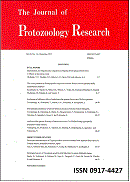Volume 10, Issue 1
Displaying 1-5 of 5 articles from this issue
- |<
- <
- 1
- >
- >|
-
2000Volume 10Issue 1 Pages 1-5
Published: 2000
Released on J-STAGE: September 18, 2020
Download PDF (1424K) -
2000Volume 10Issue 1 Pages 6-13
Published: 2000
Released on J-STAGE: September 18, 2020
Download PDF (2307K) -
2000Volume 10Issue 1 Pages 14-23
Published: 2000
Released on J-STAGE: September 18, 2020
Download PDF (3389K) -
2000Volume 10Issue 1 Pages 24-30
Published: 2000
Released on J-STAGE: September 18, 2020
Download PDF (2261K) -
2000Volume 10Issue 1 Pages 31-38
Published: 2000
Released on J-STAGE: September 18, 2020
Download PDF (2475K)
- |<
- <
- 1
- >
- >|
